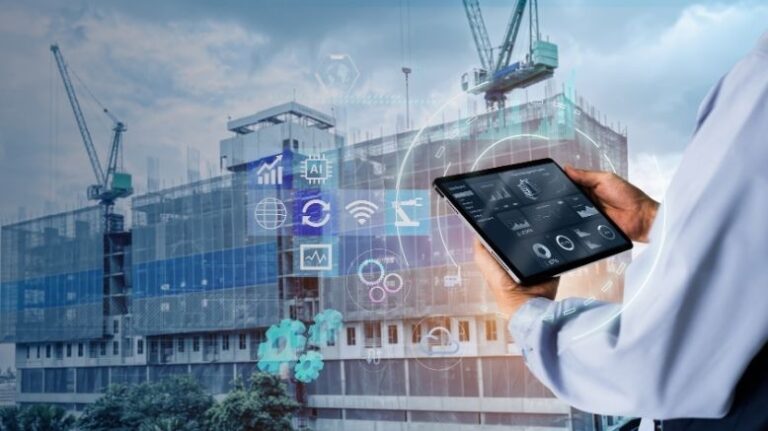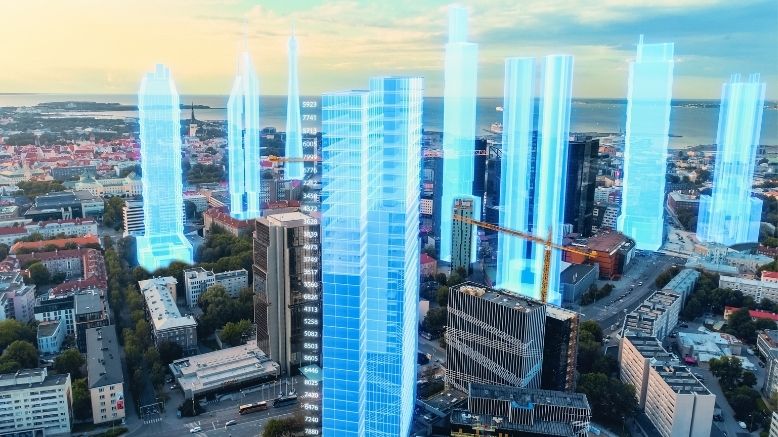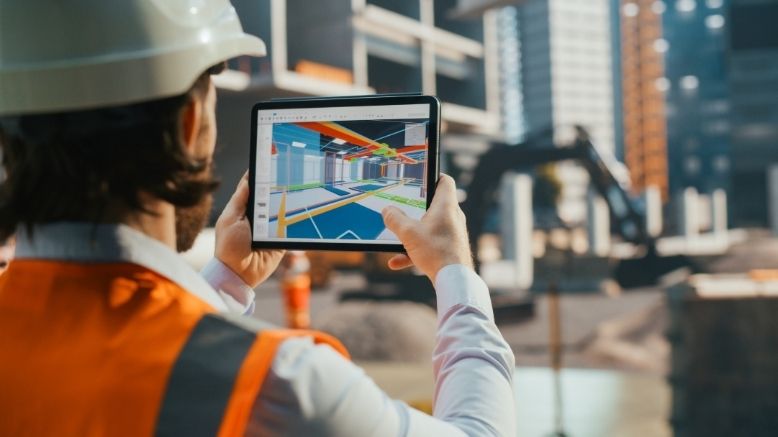— 6 min read
Beyond the Hype: 3 Ways to Avoid AI Pitfalls & Leverage its True Potential
Last Updated Sep 30, 2025
Rob Sloyer
Vice President, Innovation & Strategic Services
Rob has been working in the South Florida Construction industry since 2001, starting out as a field engineer, APM, and then Project Manager before moving into a BIM, Technology and Operational Excellence role in 2009. After transitioning back to a PM role for a few years, Rob began working at KAST in 2015 as the Director of Technical Services, and is now Vice President of Innovation & Strategic Services. The KAST Strategic Services Department believes in Putting the Project First and eliminating pain points for customers and KAST employees through training, technology implementation, BIM/VDC, trade Coordination, Procore, and other services. Rob attended the University of Florida, earning a BA in Architecture before moving on to the Building Construction graduate program.
Diane McCormick
Writer
33 articles
Diane McCormick is a freelance journalist covering construction, packaging, manufacturing, natural gas distribution, and waste oil recycling. A proud resident of Harrisburg, PA, Diane is well-versed in several types of digital and print media. Recognized as one of the premier voices in her region, she was recognized as the Keystone Media Freelance Journalist of the Year in 2022 and again in 2023.
Last Updated Sep 30, 2025

Artificial intelligence (AI) the newest darling of the tech world, offers new avenues in construction to ease pain points and find solutions that save time and create efficiencies. But could AI also introduce counterproductivity to the jobsite? Before outsourcing their daily duties to AI, construction professionals should explore the potential pitfalls -- as well as the benefits.
If AI displaces hands-on learning, botches communications, or sends jobsite leaders down time-consuming rabbit holes, it can create rework, sow confusion, and generate costs that outweigh the benefits.
This article explores the preparation and considerations needed as project leaders incorporate AI into operations. It is true that AI can drive efficiencies in clash detection, enhance communications, and help ease labor shortages. But it should be seen as a tool for enhancing -- not replacing -- the fundamentals of collaboration and human judgment that drive jobsite productivity.
Table of contents
AI for Clash Detection
AI promises a day when it can evaluate images captured by cameras mounted to people, drones, or robots. By bringing automation to project monitoring, AI can verify systems installations and BIM compliance, saving the time that people currently put into clash detection and progress checks.
When anomalies appear, AI could determine whether the situation requires further evaluation. By alerting builders to mistakes before they’re repeated floor after floor, AI promises to lessen the risks to time, budget, and safety associated with rework.
However, clash detection calls for keen judgment regarding whether a deviation deserves more time and attention. AI might not recognize that an incorrect installation, such as misplaced ductwork running solo through a ceiling, can stay intact, while another system that’s off by a fraction requires corrective action.
AI’s knowledge is also limited to the data fed into its model. PMs and other project leaders have a broader perspective. They know about future installations or smaller details that BIM doesn’t show. Their knowledge of every possible factor gives them a richer toolbox to apply in the search for an optimal solution.
“People say that AI is automating the tedious work, but the tedious work is how people learn. I don't know that I want the AI to say definitively that this is or is not a problem.”
Rob Sloyer
Vice President, Innovation & Strategic Services
KAST Construction
Ideally, AI integrated with BIM can identify discrepancies between models and reality. Instead of issuing definitive declarations, it can analyze imagery and issue alerts about potential problems for humans, leveraging their spectrum of resources and knowledge, to inspect and resolve.
As AI standardizes visualization into a stream of timely information, project leaders can incorporate adjustments into their everyday routines, preventing small errors from snowballing into big problems. By retaining the corrective aspects of the job, they can also continue to make the jobsite a place for learning by doing.
AI can also bring value-add to visualization by raising real-time alerts that prompt real-time action. Programming AI reality captures to spot apparent hazards brings a new set of eyes to the constant vigilance needed for safety.
"Finding safety issues after the fact is better than not finding them, but stopping and making a correction is better."
Rob Sloyer
Vice President, Innovation & Strategic Services
KAST Construction
AI to Enhance Communications
AI can improve the RFI process, perhaps prompting senders to attachments and offer possible solutions, which can elicit faster, more detailed responses.
AI can also save time by writing the emails and texts that consume large amounts of a PM’s day, but it raises the question: What if the recipient is also using AI to respond?
"My big concern right now is that a bunch of AIs will be emailing each other back and forth. Suppose a PM has AI write all their email responses to the architect. What if the architect's doing the same thing? What do I need either of them for if they’re just asking a computer to start an email war with itself?"
Rob Sloyer
Vice President, Innovation & Strategic Services
KAST Construction
In those cases, the nuances of human interaction become muddled. Digital “authors” don’t talk in terms that resonate with recipients, creating missed opportunities for the cogent, creative, and articulate responses and dialog that propel a project forward.
“Imagine trying to submit an RFI without referencing a drawing. What if the system could prompt you – ‘Hey, we noticed you didn't include a drawing. RFIs with drawing references are answered 82.5% faster on average. Are you sure you don't want to attach one?’ If the RFI relates to the plumbing system, it could even suggest relevant plumbing drawings.
These kinds of AI-generated prompts could teach users that providing more information leads to quicker, more accurate responses.
Often, we write an RFI, an architect answers in good faith, but due to withheld information on our part, we find the answer inadequate and reopen the RFI. If we had cited a drawing and offered a suggested solution initially, we could avoid this back-and-forth, ensuring a smoother communication process.”
Rob Sloyer
Vice President, Innovation & Strategic Services
KAST Construction
AI and the Labor Shortage
In an industry plagued by labor shortages, AI offers support for the workers of today and tomorrow. AI is giving robots the brains to team up with humans for safer, more precise work in some repetitive tasks, such as bricklaying.
Plus, experienced workers preparing to leave construction -- which they are doing in unsustainable numbers -- could train AI in what they know. All that historical knowledge could then be passed on to new generations, ready for application on the jobsite.
“We keep hearing about the aging, experienced workforce departing and a younger, less experienced generation replacing them. AI is perfectly positioned to bridge this kind of knowledge gap. If seasoned professionals train AI models with their knowledge, those same AI models could be used to guide newer workers long after the trainer has gone.
This kind of crowdsourced AI training offers a scalable solution. It's impractical to pair one retiring plumber with 15 new project engineers. But that same plumber, with a bit of AI prompting and training, could effectively educate an entire incoming class of workers.”
Rob Sloyer
Vice President, Innovation & Strategic Services
KAST Construction
However, some of the promised benefits of AI could actually result in a higher stress, less productive work environment. In construction offices, AI is taking over menial tasks and manual data entry, in the hope that it will drive people to concentrate on higher-order tasks.
But to be effective at higher-order work, humans need breaks. Intense concentration on complex puzzles for eight hours a day leads to burnout – another unintended drag that can negate AI’s productivity benefits.
AI for Maximizing Human Productivity
To avoid the downsides and effectively leverage AI as a problem-solving tool, the tasks ahead include:
- Standardizing use of AI to enhance clash detection and resolution.
- Investigating ways to involve experienced workers in AI training for knowledge transfer.
- Developing AI prompts for construction-specific tasks, such as RFI submissions and daily logs.
- Monitoring developments in AI-assisted field work, such as augmented glasses and bricklaying robots.
Before AI becomes entrenched in construction with its pitfalls intact, construction professionals have the opportunity to explore AI applications that enhance human expertise and drive jobsite productivity upward.
Was this article helpful?
Thank you for your submission.
0%
0%
You voted that this article was . Was this a mistake? If so, change your vote here.
Scroll less, learn more about construction.
Subscribe to The Blueprint, Procore’s construction newsletter, to get content from industry experts delivered straight to your inbox.
By clicking this button, you agree to our Privacy Notice and Terms of Service.
Thank you!
You’re signed up to receive The Blueprint newsletter from Procore. You can unsubscribe at any time.
Categories:
Tags:
Written by
Rob Sloyer
Vice President, Innovation & Strategic Services | KAST Construction
Rob has been working in the South Florida Construction industry since 2001, starting out as a field engineer, APM, and then Project Manager before moving into a BIM, Technology and Operational Excellence role in 2009. After transitioning back to a PM role for a few years, Rob began working at KAST in 2015 as the Director of Technical Services, and is now Vice President of Innovation & Strategic Services. The KAST Strategic Services Department believes in Putting the Project First and eliminating pain points for customers and KAST employees through training, technology implementation, BIM/VDC, trade Coordination, Procore, and other services. Rob attended the University of Florida, earning a BA in Architecture before moving on to the Building Construction graduate program.
View profileDiane McCormick
Writer | Procore Technologies
33 articles
Diane McCormick is a freelance journalist covering construction, packaging, manufacturing, natural gas distribution, and waste oil recycling. A proud resident of Harrisburg, PA, Diane is well-versed in several types of digital and print media. Recognized as one of the premier voices in her region, she was recognized as the Keystone Media Freelance Journalist of the Year in 2022 and again in 2023.
View profileExplore more helpful resources

Trade Coordination: The Contractor’s Guide
Trade coordination in construction is a long-standing challenge. For as long as specialized trades have been hired for projects, there has been a need to manage a timely onsite presence,...

Jobsite of the Future: Suffolk’s Approach to Tech, AI and Digital Transformation
In an industry often characterized by tradition and caution, Felipe Dominguez of Suffolk is part of a new wave of leaders, driving an ancient industry into the digital era. As...

30 minutes max: Streamlining progress meetings for GCs
For an industry that hinges on physically creating a tangible product on the jobsite, construction requires a lot of folks to spend a lot of time sitting in meetings. One...

Construction Quality Assurance: The Contractor’s Guide
For any construction business, a reputation for quality is the ticket to a robust pipeline of work. High-quality outcomes can lead to the success of any construction project. Construction quality...
Free Tools
Calculators
Use our calculators to estimate the cost of construction materials for your next project.
Templates
Find a template to help you with your construction project tasks.
Material Price Tracker
Get the latest U.S. retail prices and view historical trends for common building materials.
Glossary
Explore key terms and phrases used in the industry.
